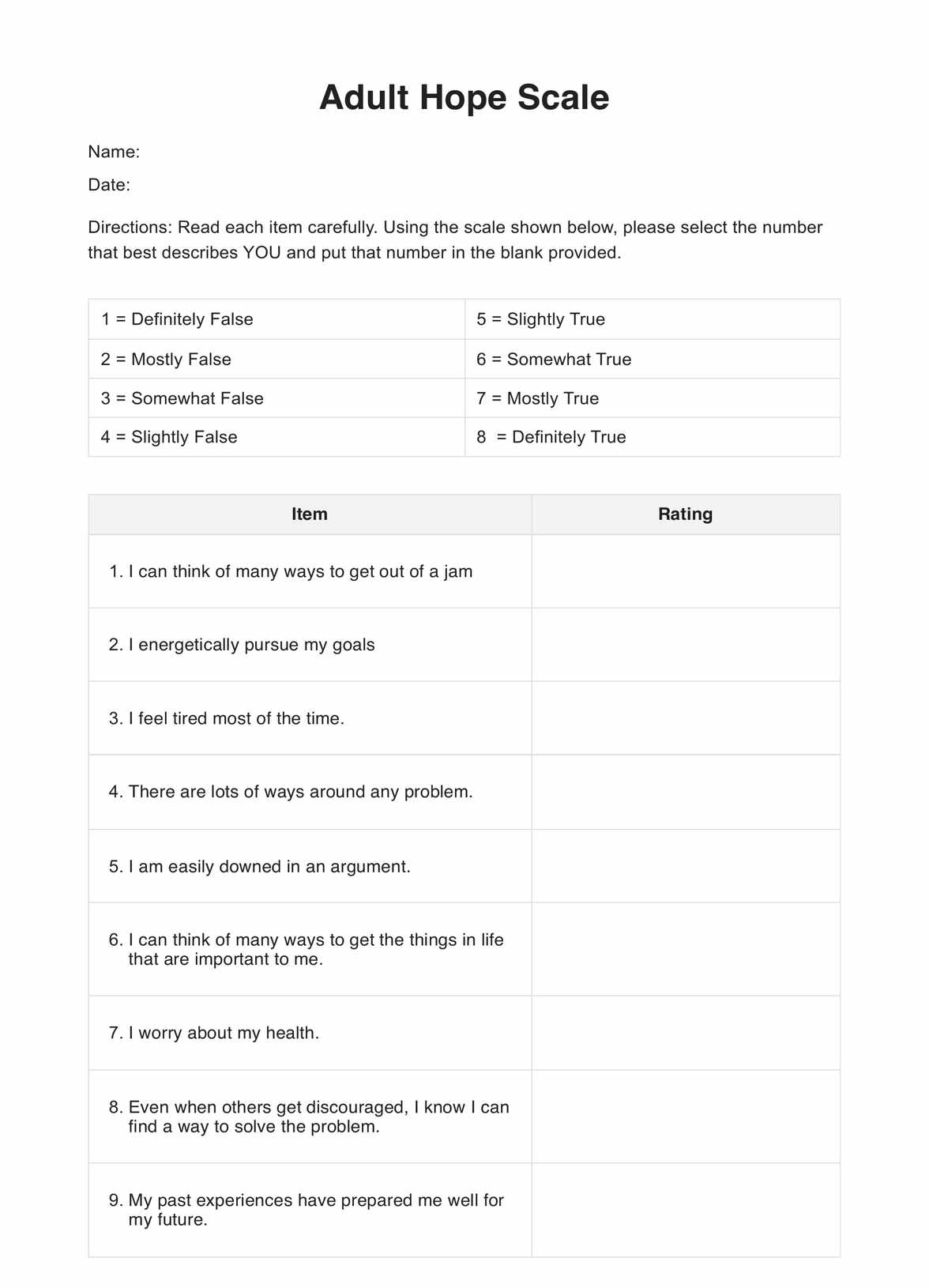Psychologists, therapists, counselors, and other mental health professionals use the Adult Hope Scale to assess an individual's level of hope. It can help them better understand their clients' strengths and capabilities and identify areas where they may need additional support or resources.

Adult Hope Scales
The Adult Hope Scale helps to measure hopeful thinking and resilience in adults. Download our free PDF and learn more about the scale today.
Adult Hope Scales Template
Commonly asked questions
You can use the Adult Hope Scale in various settings during initial assessments, therapy sessions, and follow-up appointments. It can help monitor progress over time and identify specific areas of concern or need.
The Adult Hope Scale measures an individual's level of hope by assessing the three components: will, pathways, and agency. It is typically administered through questionnaires, surveys, or interviews. The results of the Adult Hope Scale can then be used to help create a more comprehensive picture of an individual's emotional health and well-being.
EHR and practice management software
Get started for free
*No credit card required
Free
$0/usd
Unlimited clients
Telehealth
1GB of storage
Client portal text
Automated billing and online payments











